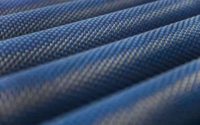Viscose Staple Fibre (VSF) Market to Grow at a CAGR of 4.78% by 2030
According to ChemAnalyst report, “Global Viscose Staple Fibre (VSF) Market: Plant Capacity, Production, Operating Efficiency, Demand & Supply, End Use, Distribution Channel, Region, Competition, Trade, Customer & Price Intelligence Market Analysis, 2015-2030”, global Viscose Staple Fibre (VSF) market has shown considerable growth in historic period and is projected to achieve a healthy CAGR of 4.78% during the forecast period. Due to continuous growing demand for bio-degradable, eco-friendly, and sustainable products from consumers, there is expected an increase in the demand of VSF for its lightweight and heat absorbing properties from Industries such as apparel and textiles. As VSF possess the ability to be light, breathable, and highly absorbent of heat and moisture, they are highly used in the manufacturing of soft, smooth, and durable fabrics for various sectors.
Get more information: https://www.chemanalyst.com/industry-report/viscose-staple-fibre-market-607
Viscose Staple Fibre Overview:
Viscose Staple Fibre (VSF) also known as artificial cotton Fibre is a versatile natural and biodegradable Fibre which is similar to cotton in texture. Due to its versatility as it is breathable, flexible, easy to blend and have excellent color retention, VSF makes an incredible choice for many textile factories to manufacture fabrics for chiffon, crepe, lace, outerwear, and others. VSF is a natural fibre that is made of cellulose from the pulp that dissolves including cotton pulp and wood pulp. The demand of viscose fibres in woven and non-woven textiles industry is expected to drive the VSF market in upcoming years. The production of the VSF increased rapidly up to 2.8 million tonnes due to the high demand in non-woven textiles applications. The insufficient availability and supply of Fibres including cotton leading to its multiple increase in prices worldwide would further propel the demand for Viscose Staple Fibres.
Viscose Staple Fibre Applications:
VSF has numerous applications such as Yarns: VSF are highly used in the making of viscose embroidery threads, cord, novelty Yarns, chenille etc; Fabrics: As VSF blends easily with other fibres, it is widely used in making crepes, lace, outerwear etc; Apparels: women’s, men’s and kid’s clothing are made using VSF; Domestic textiles: Viscose fibres are used in blankets, curtains, hosiery, tablecloth and others; Industrial textiles: VSF are also used in the manufacturing of mechanical rubber, goods such as tires, belts, hoses, agriculture and other textile industries.
Environmental Impact:
Chemicals that are being used in the production of Viscose such as Carbon disulphide, are toxic and can lead to adverse health effects. However, VSF is a natural fibre and have a cotton like structure, which is not considered hazardous or polluting. When it comes to biodegradation, the viscose staple fibre is highly accessible to water and microorganisms which makes them completely biodegradable. The new method that has been Introduced lately for the manufacturing of VSF is known as Lyocell Process in which N-Methlymorpholine N-oxide is used as a solvent which produces a very little waste product making it more sustainable and environmentally friendly.
Request Sample: https://www.chemanalyst.com/ChemAnalyst/RequestForm
Due to the onset of the Covid-19, The production, and sales of VSF were highly impacted due to the fall in textile sector. Due to government’s restrictions and nationwide lockdowns, the manufacturers halted their operations, which affected the global supply chain and distribution. However, there is expected an Improvement in the upcoming year as the economy is reopening and operations are resuming by the companies. Rising demand from woven and non-woven textile industry is driving an uprise in global VSF market. As cases due to COVID increased, the manufacturers also started focusing on the production of mask which further increased the overall market of non-woven Fibres, that is used for production of masks for example Lenzing AG, which is a leading company based in Austria which started the safety masks production in 2020 following numerous increases in the demand.
Viscose Staple Fibre Regional Outlook:
Region wise, Asia-Pacific region dominates the VSF market followed by Europe and North America. The dominance of the APAC region is highly impacted by the continuous growth of textile industry across Asian countries leading a huge demand for VSF for various applications. The Asian countries including China, Japan, India and South Korea accounts for the largest world mill consumption of Viscose Staple Fibre for textile applications, whereas for non-woven applications, Western Europe dominates the VSF mill consumption. China has become the largest exporter of grey Viscose Staple fabrics followed by Indonesia. The production and demand of VSF has declined over the last few years worldwide. However, former Soviet Union countries and Eastern European countries has shown an increase in the production and demand of VSF over the last several years. The market price and expenditure pattern of Australia’s textile and yarn industry similar to that of the U.S. industry.
FAQs:
- What Is Economic Impact On Viscose Staple Fiber Industry?
The COVID-19 had a severe impact on the global VSF market by affecting the production, global supply chain and distribution due to nationwide lockdown and travel ban. However, the nonwoven textile industry led to the production of safety masks during the global crises which boosted the demand of VSF worldwide.
- Which Technology is majorly used for the Production of Viscose Staple Fiber?
Lyocell process is being used for the production of VSF lately in which solvent N-Methlymorpholine N- oxide is used which produces a very little waste product making it more sustainable and environmentally friendly.
- Which region dominates the global Viscose Fiber Staple Market?
Asia-Pacific region dominates the VSF market followed by Europe and North America
Key Points of this Report:
- Analysing the market potential by its grade, applications, end-use, segments and volume by calculating the Compound Annual Growth Rate (CAGR) from historic and forecast period.
- Focusing on the driving factors, opportunities, growth, potential and challenges in the market.
- Brief information on the production, manufacturing, handling, sales and distribution across different geographic channels to expand economy and revenue.
- Evaluating a competitive landscape of more than ten global companies by analysing their product value, import-export sales and supply-demand gap.
“Being linked to the downstream application such as Clothing, Auto Industries and home textiles etc, the global Viscose Staple Fibre Industry has shown a significant growth along with the growing population and shifting in the consumer preference. It is projected that in the upcoming years, India is going to become the world’s fifth biggest consumer market. In addition, growing per capita income worldwide poised a stronger outlook to the country’s VSF demand. The nationwide lockdown and government’s restrictions affected the global supply chain logistics and caused immediate shortage of raw materials hence increased the prices of VSF in textile industry. Meanwhile, China serves as the major region for growth as well as with sufficiently installed capacities. With new competitors emerging across the Asian acetone market, it is extremely important to keep an eye which region will grab the biggest market share during the forecast period .” said Mr. Karan Chechi, Research Director with TechSci Research, a research-based management consulting firm promoting ChemAnalyst worldwide.
Key Players:
Some of the major players operating in global Viscose Staple Fibre market are Aditya Birla Chemicals, Glanzstoff, Jilin Chemical Fibre Group co., Ltd, Kelheim Fibres GmbH, Nanjing Chemical Fibre Co. Ltd, Xingda Chemical Fibre Co. Ltd, Lenzing AG, Tangshan Sanyou Group Xingda Chemical Fibre Co., Ltd, Xinjiang Zhongtai Chemical Co. Ltd, Sateri Holding Ltd. and Others.
About Us
ChemAnalyst is a leading provider of chemical commodity prices in more than 12 countries since from last 4 Years. The company has emerged as a preferred pricing supplier amongst Procurement Managers and Strategy Professionals globally who wants to track near real time prices of chemicals on its interactive dashboard. Unlike most of its competitors such as ICIS, IHS & S&P Platts the company doesn’t believe in delivering prices in PDF reports. The company has developed proprietary algorithm based online subscription platform in which users can track years of historical prices of more than 250 chemical commodities. In addition, since it’s all online, the users cannot just compare prices across multiple countries but also with other commodities and play with the data by generating multiple graphs to find out amazing insights. The users get access to grade wise CIF, CFR & Ex Works prices at multiple ports in each country.
ChemAnalyst also provides market analysis for more than 1000+ chemical commodities such as Production, Demand, Supply, Plant Operating Rate, Imports, Exports, Suppliers, Customers and much more. The company has created online interactive dashboard in which customers can access all this data instantly with a click of a button. The users will not only be able to analyse historical data for past years but will also get to analyse short term and long-term forecasts for coming years. With the access to local field teams, the company can provide high quality reliable market analysis data for more than 20 countries.
ChemAnalyst is a one stop solution for all the data related needs. We at ChemAnalyst are committed to assist customers worldwide with their data and insights needs using our comprehensive online platform.
For more information, please visit us at www.chemanalyst.com
Contact Us:
Nilesh Vishwakarma
B-44 Sector-57 Noida,
National Capital Region
Tel: 0120-4523948
Mob: +91-8882336899
Email: info@chemanalyst.com



